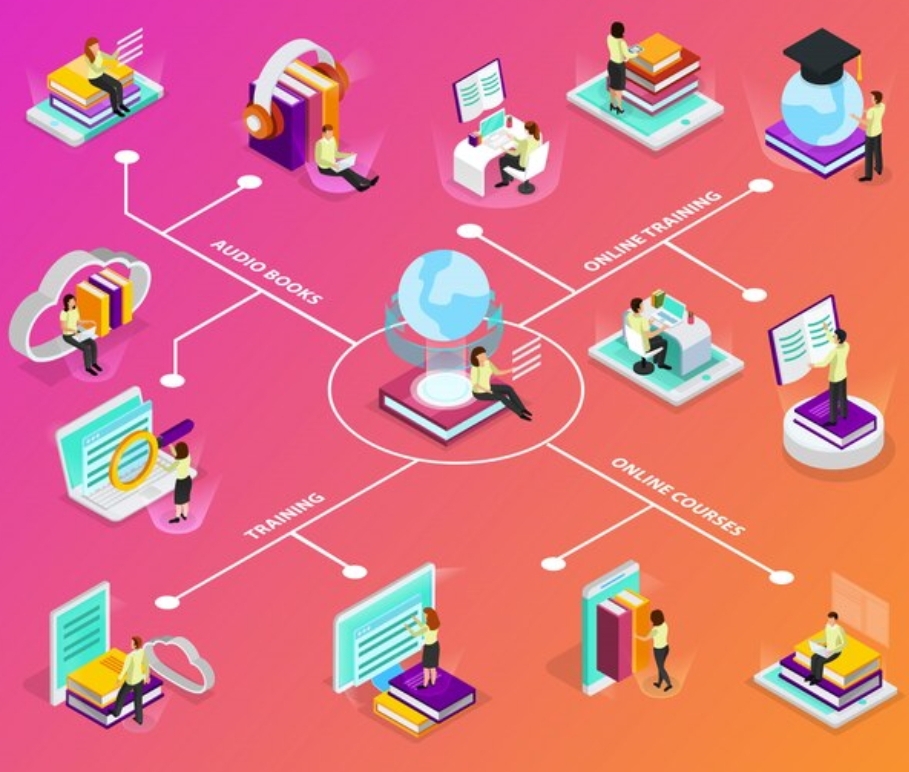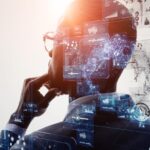
Introduction
In an increasingly connected world, traditional education models struggle to bridge gaps in accessibility, affordability, and personalization. The emergence of decentralized learning platforms is reshaping global education by offering inclusive, flexible, and learner-centered experiences that reach students worldwide. This transformation goes beyond geography, creating a digital ecosystem that empowers students, educators, and communities alike.
Why Decentralized Learning Matters in Education
Unlike conventional learning systems, which often rely on centralized, institutional control, decentralized platforms use technology to distribute knowledge and resources across networks. Here’s why this shift is crucial for global education:
Breaking Geographic Barriers
With decentralized learning, students from remote or underserved areas can access quality educational resources without relocating or depending on limited local resources. Platforms leveraging blockchain and peer-to-peer (P2P) sharing ensure content reaches users no matter where they are, giving everyone a chance to learn and grow.
Enhanced Accessibility and Inclusivity
Decentralized systems can serve as a great equalizer by catering to diverse needs. Learners with disabilities or those in underrepresented groups benefit from content that can be tailored to various formats, from audio to text-to-speech functionalities, creating a more inclusive environment.
Cost-Effectiveness and Financial Access
By cutting down the need for extensive administrative infrastructure, decentralized platforms lower the costs of delivering education. Micro-learning courses, affordable certifications, and free resources reduce the financial burden on learners, making education accessible to economically disadvantaged populations.
Key Technologies Powering Decentralized Learning Platforms
Decentralized learning thrives on innovative technologies that increase efficiency and transparency. Here are some of the standout tech components:
Blockchain for Transparent Credentialing
Blockchain technology helps verify and store academic credentials securely. Digital certificates on the blockchain are tamper-proof, easily shareable, and recognized globally, enhancing credibility and employment opportunities for learners.
AI and Machine Learning for Personalization
AI-powered algorithms analyze learner behavior, adapting content to individual needs. By adjusting to a student’s pace, interests, and strengths, these platforms foster a personalized learning experience that makes information retention easier and more enjoyable.
Smart Contracts for Secure Transactions
Smart contracts facilitate safe financial transactions, whether it’s paying for courses or earning tokens for completing modules. They eliminate intermediaries, ensuring learners and educators receive fair value without delays.
Case Studies: Decentralized Platforms Making an Impact
To see how decentralized learning is already reshaping education, let’s explore a few pioneering platforms:
Ethereum-based Educational Hubs
Using Ethereum’s blockchain, platforms like Gitcoin and Bounties Network have set up decentralized hubs where students complete tasks and projects in exchange for cryptocurrency. These hubs enable learners to gain experience, earn income, and build portfolios without needing conventional certifications.
Coursera’s Distributed Certification Model
While Coursera is not entirely decentralized, its shift toward credential verification via blockchain demonstrates the potential for this tech in online learning. This model reduces fraudulent claims, allowing employers to trust online-acquired skills more confidently.
Learning Machine’s Blockchain Credentials
Learning Machine uses blockchain to issue verified credentials to students, eliminating the need for third-party validation. This empowers learners to control and showcase their achievements universally, free from the limitations of centralized verification.
The Benefits and Challenges of Decentralized Learning Platforms
Benefits
Increased Learning Autonomy: Learners have control over what, when, and how they study, leading to higher engagement and satisfaction.
Global Collaboration: Decentralized platforms often support collaborative learning spaces, allowing students worldwide to interact, share insights, and grow together.
Sustainable Models: Many decentralized systems are built on eco-friendly tech practices, emphasizing energy efficiency and sustainability.
Challenges
Technical Literacy: For many learners, decentralized systems can seem complex, especially in regions with limited tech literacy.
Resource Requirements: High-speed internet and compatible devices are often required, limiting accessibility for some populations.
Regulatory Concerns: The lack of centralized oversight can create security concerns, particularly for financial transactions and data privacy.
Future Prospects: A Global Education System Powered by Decentralization
As we look to the future, decentralized learning platforms have the potential to overcome the rigidity and limitations of traditional education models. Here’s how they could reshape global learning:
Fostering Lifelong Learning
Decentralized platforms make it easier for individuals to pursue lifelong learning, accessing micro-courses or certification programs throughout their lives, regardless of their initial educational background.
Enabling Localized Content Creation
Decentralization empowers educators globally to create localized content that reflects their culture and context, enabling learners to engage with more relevant material.
Democratizing Education Funding
With decentralized financial mechanisms, students can fund their learning through crowd-sourced loans or cryptocurrency grants. This could break the cycle of educational debt, especially in underserved regions.
Conclusion
The journey toward a decentralized education system is filled with exciting possibilities that challenge traditional models and expand access to learning on a global scale. By harnessing the power of blockchain, AI, and P2P networks, decentralized platforms hold the promise of creating an inclusive, equitable, and dynamic educational landscape. As more learners, educators, and institutions embrace this model, the dream of universal access to quality education becomes more attainable. Decentralized learning isn’t just a trend; it’s the future of global education.
Take the Next Step
Are you ready to explore the world of decentralized learning? Dive into our resources on blockchain in education, AI-driven personalized learning, and the latest trends in global ed-tech. Subscribe to our newsletter for regular updates, and be part of a community committed to reshaping education for everyone, everywhere.
Don’t miss out, sign up now to stay at the forefront of education innovation and get insights delivered directly to your inbox!
Get the digital classroom book for more tools needed.










